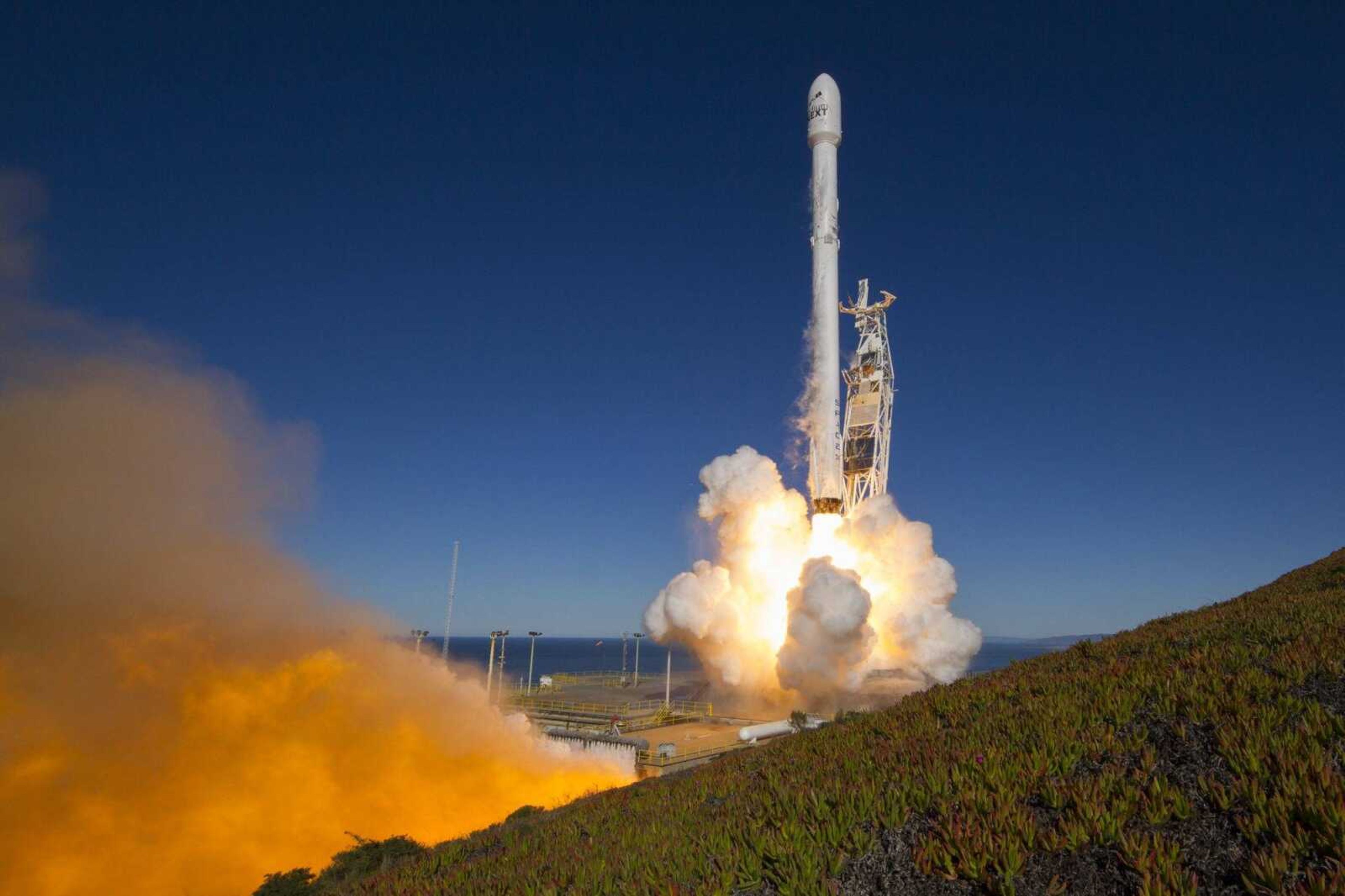SpaceX launches first rocket since explosion in Florida
LOS ANGELES -- A SpaceX Falcon 9 rocket blasted off from California on Saturday and placed a constellation of satellites in orbit, marking the company's first launch since a fireball engulfed a similar rocket on a Florida launch pad more than four months ago...
LOS ANGELES -- A SpaceX Falcon 9 rocket blasted off from California on Saturday and placed a constellation of satellites in orbit, marking the company's first launch since a fireball engulfed a similar rocket on a Florida launch pad more than four months ago.
The two-stage rocket lifted off from Vandenberg Air Force Base at 9:54 a.m. carrying a payload for Iridium Communications Inc., which is replacing its entire global network with 70 next-generation satellites.
The satellites were deployed about an hour after launch.
About nine minutes after the rocket blasted off, to cheers from the control room, its jettisoned first stage landed upright on a so-called droneship in the Pacific Ocean south of Vandenberg -- part of SpaceX's effort to make boosters reusable.
The company had succeeded six times previously with landings on a barge or ashore.
A camera aboard the first stage gave viewers a you-are-there experience as it returned to Earth, flared landing rockets and made a perfect upright touchdown on the floating pad.
The return to flight is an important step for SpaceX, billionaire Elon Musk's California-based company that has about 70 launches in line, worth more than $10 billion.
In addition to commercial launches, SpaceX ferries supplies to the International Space Station and is developing a Falcon capable of carrying astronauts to the station.
SpaceX officials say they identified all possible causes of the Sept. 1 accident during prelaunch testing at Cape Canaveral Air Force Station, Florida, and took corrective action.
The accident destroyed the rocket and its payload -- a satellite Facebook wanted to use to spread internet access in Africa -- and grounded the Falcon 9 program.
SpaceX announced this month investigators concluded the accident involved a failure of one of three helium tanks inside the rocket's second-stage liquid oxygen tank.
The investigation involved the Air Force, NASA, the National Transportation Safety Board and the Federal Aviation Administration, which issued a license for the launch.
In June 2015, a Falcon loaded with space station supplies disintegrated after liftoff. SpaceX determined a support strut broke.
The 10 satellites launched Saturday are part of McLean, Virginia-based Iridium's project to replace its existing network of satellites that provide global voice and data communications.
The program, called Iridium NEXT, was not only delayed by the SpaceX accident but again most recently as a powerful storm headed into California last weekend.
Iridium plans six more Falcon 9 launches, each carrying 10 satellites, as part of a technology upgrade expected to be completed in 2018.
SpaceX's effort to recover Falcon first stages is intended to reduce costs by recycling a major piece of the launch system.
The first stage contains tanks for liquid oxygen and kerosene as well as nine engines that power the rocket and payload into space, then separates 21/2 minutes into flight as the single-engine second stage ignites and continues on to place payloads in the proper orbit.
The first Falcon booster to safely land back on Earth now stands outside the company's headquarters.
Connect with the Southeast Missourian Newsroom:
For corrections to this story or other insights for the editor, click here. To submit a letter to the editor, click here. To learn about the Southeast Missourian’s AI Policy, click here.









